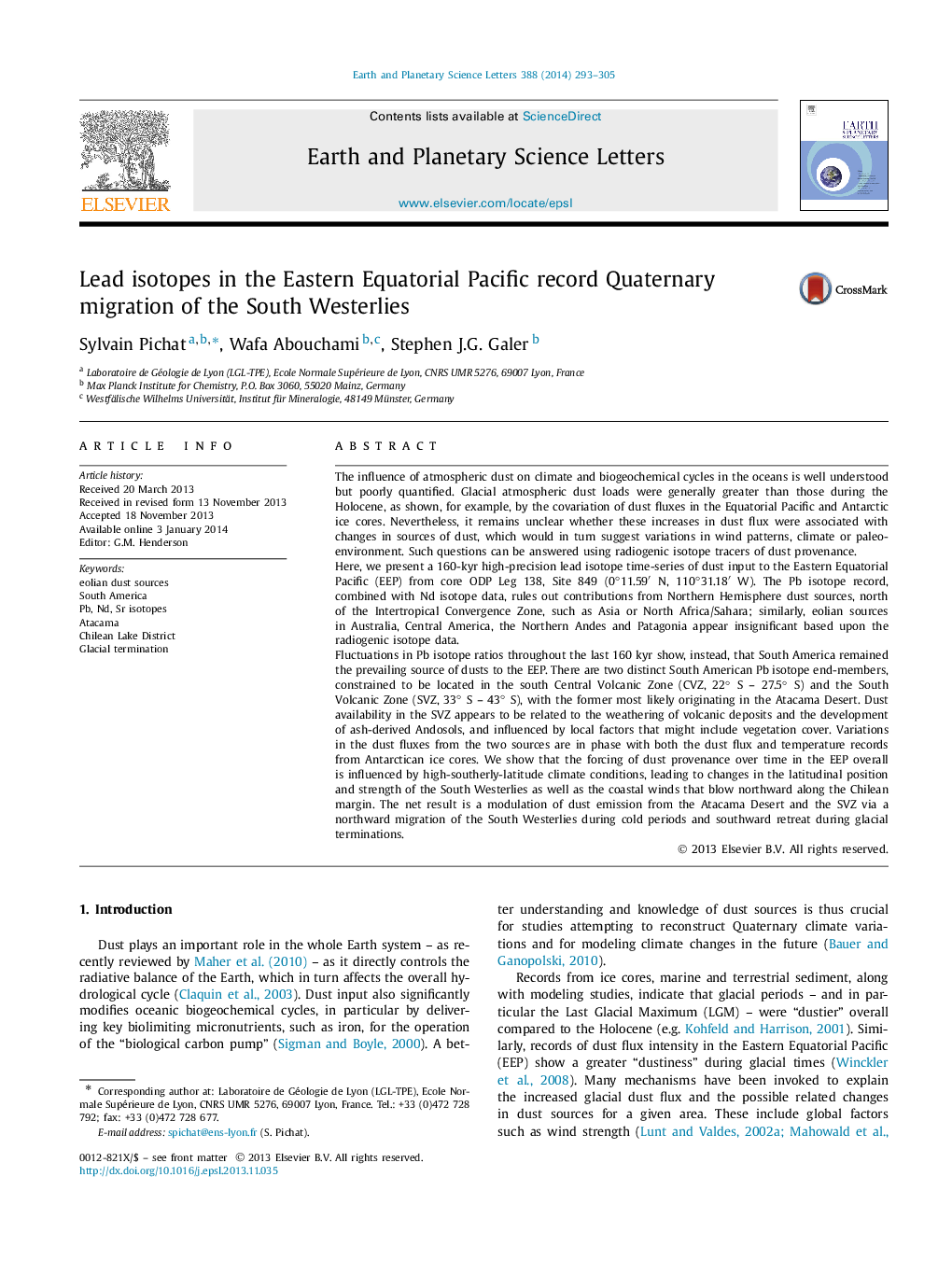| کد مقاله | کد نشریه | سال انتشار | مقاله انگلیسی | نسخه تمام متن |
|---|---|---|---|---|
| 6429796 | 1634768 | 2014 | 13 صفحه PDF | دانلود رایگان |
• Dust sources to the Eastern Equatorial Pacific evaluated using a 160-kyr Pb isotope record.
• The two main sources are from South America, in the Central and Southern Andes.
• EEP Pb isotope and Antarctica temperature records are strongly correlated.
• Dust contributions modulated by glacial–interglacial latitudinal shift of the South Westerlies.
The influence of atmospheric dust on climate and biogeochemical cycles in the oceans is well understood but poorly quantified. Glacial atmospheric dust loads were generally greater than those during the Holocene, as shown, for example, by the covariation of dust fluxes in the Equatorial Pacific and Antarctic ice cores. Nevertheless, it remains unclear whether these increases in dust flux were associated with changes in sources of dust, which would in turn suggest variations in wind patterns, climate or paleo-environment. Such questions can be answered using radiogenic isotope tracers of dust provenance.Here, we present a 160-kyr high-precision lead isotope time-series of dust input to the Eastern Equatorial Pacific (EEP) from core ODP Leg 138, Site 849 (0°11.59′ N, 110°31.18′ W). The Pb isotope record, combined with Nd isotope data, rules out contributions from Northern Hemisphere dust sources, north of the Intertropical Convergence Zone, such as Asia or North Africa/Sahara; similarly, eolian sources in Australia, Central America, the Northern Andes and Patagonia appear insignificant based upon the radiogenic isotope data.Fluctuations in Pb isotope ratios throughout the last 160 kyr show, instead, that South America remained the prevailing source of dusts to the EEP. There are two distinct South American Pb isotope end-members, constrained to be located in the south Central Volcanic Zone (CVZ, 22° S – 27.5° S) and the South Volcanic Zone (SVZ, 33° S – 43° S), with the former most likely originating in the Atacama Desert. Dust availability in the SVZ appears to be related to the weathering of volcanic deposits and the development of ash-derived Andosols, and influenced by local factors that might include vegetation cover. Variations in the dust fluxes from the two sources are in phase with both the dust flux and temperature records from Antarctican ice cores. We show that the forcing of dust provenance over time in the EEP overall is influenced by high-southerly-latitude climate conditions, leading to changes in the latitudinal position and strength of the South Westerlies as well as the coastal winds that blow northward along the Chilean margin. The net result is a modulation of dust emission from the Atacama Desert and the SVZ via a northward migration of the South Westerlies during cold periods and southward retreat during glacial terminations.
Journal: Earth and Planetary Science Letters - Volume 388, 15 February 2014, Pages 293–305
